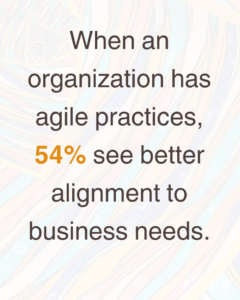HR leaders can’t predict the future. Here’s how strategic planning will prepare them for the unknown.
By Zee Johnson
Unfortunately, you don’t have a crystal ball. And, if recent years have shown us anything, it’s that we don’t always know what’s coming next. Talent leaders can attest to this. The talent market has been erratic and unpredictable. It begs the question: How can organizations prepare their TA function to keep pace with all of today’s shifts, especially those that come without warning?
For businesses to know where they’re headed, leaders must be intentional with their strategies. That’s a given. And the talent function needs to be cued into these objectives. They also need to be able to pivot quickly and react to situations as they come up. If TA leaders feel like they’re caught in red tape, they can’t effectively deal with obstacles along the way. Budgets are a topic of conversation in this market as well, but what’s more important is determining what’s a worthwhile investment and showcasing the value to executives.
be cued into these objectives. They also need to be able to pivot quickly and react to situations as they come up. If TA leaders feel like they’re caught in red tape, they can’t effectively deal with obstacles along the way. Budgets are a topic of conversation in this market as well, but what’s more important is determining what’s a worthwhile investment and showcasing the value to executives.
These three points will enable leading organizations to outperform their competitors left in the limbo of economic uncertainty and market tumult.
Agile and aligned
Before mapping out a talent strategy, leaders should understand that every initiative needs to be rooted in an organizational end goal. This allows TA leaders to more easily make decisions and maintain their focus.
“Successful talent planning requires strategic alignment to business objectives above anything else,” says Carmen Scanlon, vice president of client solutions at WilsonHCG. “Understanding future talent needs and consistently working toward these, even when hiring demand is low, is important.”
Talent leaders must account for agility when planning (future) and problem-solving (current). Business Agility Institute’s recent report found that the average business agility maturity had increased by 4% last year. Another report saw that when an organization has agile practices, 54% see better alignment to business needs. This reaffirms that being agile is no longer optional, and is especially important in an uncertain market.
Scanlon says there are four ways that agility can be weaved into the TA process to ensure teams are best positioned to handle difficulties. These include:
- continuous learning;
- cross-training;
- adopting new technologies; and
- flexible resource allocation.
Return on investment
Another factor that works in tandem with agility when planning is budgeting. While budget conversations can cause anxiety, Scanlon says they don’t have to. Heading into budget season and amidst economic uncertainty, leaders should have honest conversations to determine what’s needed from an operational and growth perspective to narrow down the most successful and cost-effective talent strategies.
“The right level of investment can transform talent acquisition programs into strategic, business-impacting functions. However, getting budget approval from key stakeholders can be difficult, especially during periods of economic uncertainty,” she says. “Talent acquisition leaders, therefore, must build compelling business cases.”
Building an encompassing business case consists of reviewing the TA function from top to bottom and segmenting spend into three core areas that include:
- people;
- processes; and
- technology.
Approaching budgeting in this way allows room for negotiations and allows teams to see exactly how their money will be allocated and successfully leveraged. “Talent leaders must demonstrate the ROI of proposed initiatives, tie them back to business outcomes, and come prepared with contingency plans that can be implemented in response to unexpected changes in the hiring landscape,” Scanlon says.
A scalable solution
One central thought that arises during the planning process is how companies can position themselves to continually acquire top talent to meet (and prepare for future) business needs. For Scanlon, the answer is simple: Work with an expert.
For businesses that have yet to partner, adding a new leg of business can seem costly — but that shouldn’t be assumed. In fact, recent research found that reduced expenses was the number one reason why businesses say they’ve chosen to outsource certain tasks. And for small businesses, outsourcing is so important that 83% will maintain or increase their business spend on it this year.
Scanlon says recruitment process outsourcing (RPO) can change along with business needs.
“Recruitment process outsourcing partners, for example, can scale up or down and have more flexibility during times of growth or periods of economic uncertainty,” she explains. “Talent partners also provide higher-quality candidates and can help to build talent pipelines, which is especially important in this talent-constrained market.”
Some organizations are seeing the value in a combining an in-house TA team with an RPO. “In today’s market, a hybrid approach — combination of in-house and an outsourced TA function — is becoming an extremely valuable way to build innovative and scalable TA functions that provide long-term strategic value to businesses,” she says.
No matter the market or economic conditions, the companies that plan for the unknown strategically position themselves to remain ahead of their hiring and industry competition.














